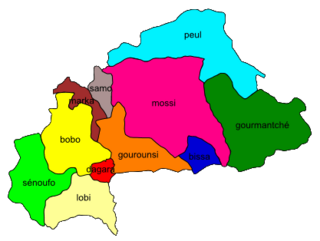Related Research Articles
Most languages of Europe belong to the Indo-European language family. Out of a total European population of 744 million as of 2018, some 94% are native speakers of an Indo-European language. Within Indo-European, the three largest phyla in Europe are Romance, Germanic, and Slavic, they have more than 200 million speakers each and together account for close to 90% of Europeans. Smaller phyla of Indo-European found in Europe include Hellenic, Baltic, Albanian, Celtic, and Armenian ; Indo-Aryan, though a large subfamily of Indo-European, has a relatively small number of speakers in Europe.
Mexicanero is the Nahuan language spoken by the Mexicanero people of southern Durango and northern Nayarit. It has around 1000 speakers in the remote towns of San Pedro Jícora and San Juan Buenaventura in the Mezquital municipality, Durango, where they coexist with speakers of Low Southern Tepehuán, and some 300 speakers in the Acaponeta municipality of Nayarit. There are significant differences between the varieties of San Pedro Jícora on the one hand and San Agustín Buenaventura and Nayarit on the other. The language is vibrant and spoken by adults and children.
Midland a.k.a. Central Mixe is a Mixe language spoken in Mexico. According to Wichmann (1995), there are two groups of dialects:

Samo, also known as Mande Samo, is a dialect cluster of Niger-Congo languages spoken in Burkina Faso and Mali.
Huishui Miao, a.k.a. Huishui Hmong, is a Miao language of China. It is named after Huishui County, Guizhou, though not all varieties are spoken there. The endonym is Mhong, though it shares this with Gejia and it is simply a variant spelling of Hmong. Raojia is closely related.
Kayan is a dialect cluster spoken by the Kayan people of Borneo. It is a cluster of closely related dialects with limited mutual intelligibility, and is itself part of the Kayan-Murik group of Austronesian languages.
Western Popoloca is an indigenous language of Puebla state, Mexico. There are two principal varieties, sometimes counted as distinct languages,
Northern Popoloca is an indigenous language of Puebla state, Mexico. The dialects of the two towns where it is spoken, San Luís Temalacayuca and San Marcos Tlacoyalco, are over 90% mutually intelligible.
Tehuacan–Zongolicaa.k.a.Southeastern Puebla Nahuatl is a variety of Nahuatl spoken by ethnic Nahua people in southeastern Puebla state (Tehuacan) and southern Veracruz (Zongolica) in Mexico.
Mixtepec Zapotec is an Oto-Manguean language of Oaxaca, Mexico. It is reported to have 80% intelligibility with Lapaguía Zapotec, but with only 45% intelligibility in the other direction.
Lealao, also known as Latani, is the most divergent of the Chinantecan languages of Mexico. It is spoken in northeast Oaxaca, in the towns of San Juan Lealao, Latani, Tres Arroyos, and La Hondura.
Ocuiltec, also known as Tlahuica and Atzingo Matlatzinca, is a moribund language of Central Mexico closely related to Matlatzinca and Pirinda.
Silacayoapan is one of the more extensive Mixtec languages. It is spoken by 150,000 people in Puebla and across the border in Guerrero, as well as by emigrants to the United States.
Highland Chinantec is a Chinantecan language of Mexico, spoken in Comaltepec, San Juan Quiotepec, and surrounding towns in northern Oaxaca. It has a complex system of tone and vowel length compared to other Chinantec languages. The two principal varieties, Quiotepec and Comaltepec, have marginal mutual intelligibility. Yolox Chinantec is somewhat less divergent.
Chiltepec-Tlacoatzintepec Chinantec is a Chinantecan language of Mexico, spoken in northern Oaxaca in the towns of San José Chiltepec, San Juan Bautista Tlacoatzintepec, San Pedro Alianza, Santiago Quetzalapa, and San Juan Zapotitlán. The two principal varieties, Chinantec and Tlacoatzintepec, have marginal mutual intelligibility. They are close to Sochiapan Chinantec.
Ixtlán Zapotec is a Zapotec dialect cluster of Oaxaca, Mexico.
Atatláhuca–San Miguel Mixtec is a diverse Mixtec language of Oaxaca.
Pinotepa Mixtec is a Mixtec language of southern Oaxaca. Ethnologue lists the variety of San Juan Colorado / San Pedro Atoyac as a separate language.
Estetla Mixtec is a diverse Mixtec language of Oaxaca.
Ñumí Mixtec is a diverse Mixtec language of Oaxaca. It may be closest to Peñasco Mixtec.
References
- ↑ San Juan Atzingo at Ethnologue (18th ed., 2015) (subscription required)
Metzontla at Ethnologue (18th ed., 2015) (subscription required)